Five new skills to learn for the 2016/17 ski season
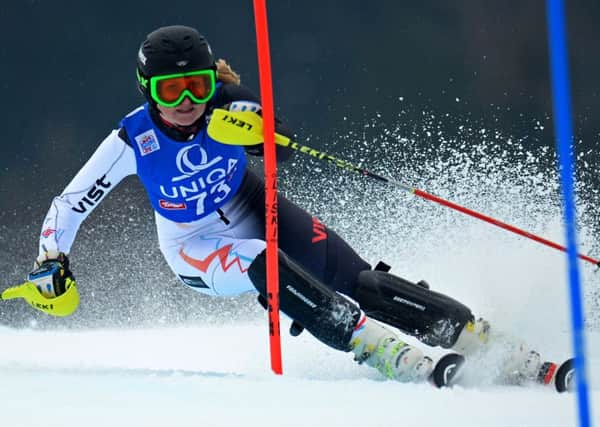

How to ski gates, with Charlie Guest
A member of the Team GB Senior Alpine Ski Team, Charlie Guest is aiming to qualify for the 2018 Winter Olympics.
“If you’re looking to ski fast, I think the key thing is to pick a good line through the gates. The most important thing is to have what we call a “high line” – that means getting most of your turn done before you go past the gate, so you can spend more time going down the hill rather than horizontally across the hill.
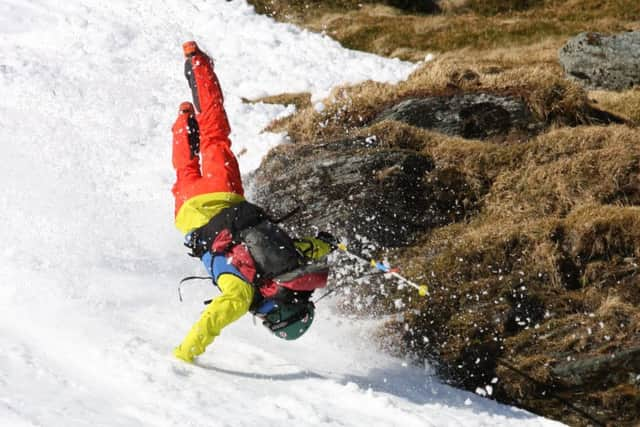

Advertisement
Hide AdAdvertisement
Hide AdThe start is also very important. You can save a lot of time on your start if you make sure you concentrate on your feet being the last thing to go through the wand [the little plastic stick a few inches off the ground that triggers the timer]. We usually do what we call a catapult start, so you have your poles in front of the wand already, you pull back and then use your shoulders and your tricep muscles to push backwards with your arms, so your body leans forward and your feet come out behind you.
*www.charlieguest.co.uk
How to survive a rag-doll wipeout, with Euan Larter
Last winter, during the Lawers of Gravity freeride contest in the Ben Lawers range near Loch Tay, Euan Larter decided to start his first run with a huge air near the top of Meall nan Tarmachan. He almost landed it, too, but the soft snow that had tripped up many other competitors that day sent him spinning into a spectacular rag-doll wipeout. Here, he explains how to survive once you find yourself going head-over-heels down the side of a mountain.
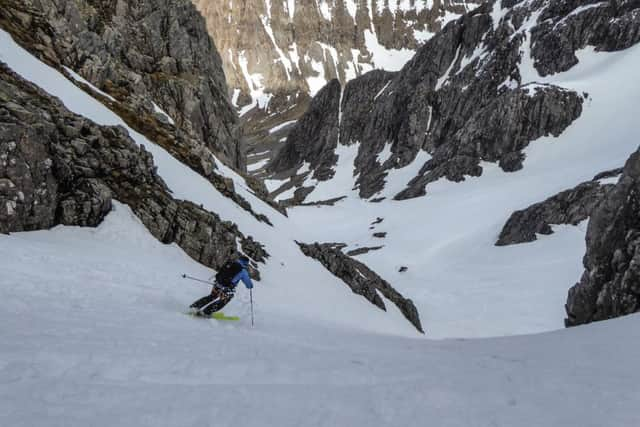

“I’ve had quite a few crashes similar to this one where you end up spinning round and going backwards. I think the key is just to stay relaxed and limp and just ride it out. You have to hope your skis come off, too, so you want to make sure you have the right DIN setting [tightness setting on the binding]. I had mine just slightly higher than they should be for my height and weight, but that was to compensate for doing these kinds of jumps. You don’t want your skis to come off when you land, but if you do fall then hopefully they should pop off.”
How to ski steep gullies, with James Thacker
James Thacker is an IFMGA mountain guide whose company Off Piste Performance offers a range of ski touring courses, including regular Ski Performance for Mountaineers courses at Nevis Range and the annual Ben Nevis Ski Weekend, held in the steep gullies on the north face of Ben Nevis.
“Picking your line is probably the first thing. For most people in Scotland those classic north-facing coire walls will have terrain that’s around about Grade One climbing and will make good skiing descents. In most cases I would recommend approaching from the bottom, so you can work out whether your line’s going to work and you also know what the conditions on the slope are like before you commit to a descent. You should also have checked the avalanche report, and you should have a detailed idea of what kind of weather to expect.
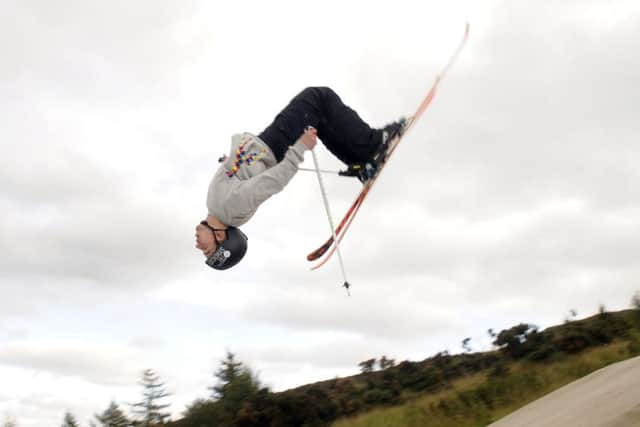

“Also, you don’t need to go to the very top of the gully. Often the steepest bit is the bit right under the cornice, but you don’t have to start there – if you go up from the bottom you can pretty much choose the height you’re comfortable with and start from there. Once you get to your starting point, you’re going to have to transition from being on foot to being on skis. One of the great things about snow is that you can sculpt it and dig out a bit of a platform. If you can do that in the gully it’ll be a lot less stressful to get into your skis.
“Once you start off, make sure your first couple of turns are good ones – you want to be settled when you start off, and if your first couple of turns are good then the rest will be. Often in these gullies it’s fall-line skiing, so it’s a good idea to ski to somewhere safe out of the way of the fall-line – sometimes that will mean you have to ski the whole thing at once and come out at the slope at the bottom.
*www.offpiste.org.uk
How to land a switch backflip, with Murray Buchan
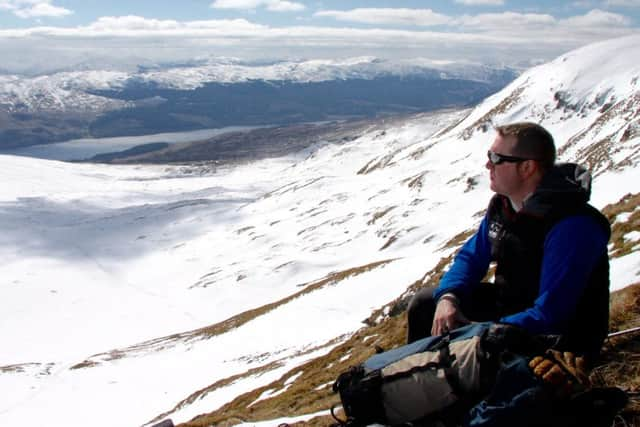

Advertisement
Hide AdAdvertisement
Hide AdMurray Buchan represented Team GB in the men’s halfpipe skiing event at the 2014 Winter Olympics in Sochi, and now he has his sights set on South Korea in 2018. Here he talks us through one of the most unnerving tricks in his freestyle repertoire – the switch backflip.
“First of all, you have to be pretty confident skiing backwards, because one of the most difficult things about this is the switch skiing. Also, you have to work up to hitting the jump switch, so make sure you know your speed on the jump going switch, and make sure you’re in control when jumping switch, so try a switch 180, switch 360, switch 540... gradually build it up so you’re doing some bigger tricks on the jump.
“So you’ll be skiing switch, you’ll have your speed right for the jump, and then it’ll be time to commit. When you get to the edge of the jump – you’ll know when you’re almost there because you’ll be looking over your shoulder – you have to “pop”, so jump off the edge of the jump. Push your hips up, your head will go back and your hips will go over and your feet will follow; everything should come from your head and your hips.
“You’ll be flying through the air, upside down, and your hips and your feet will be starting to come over the top of your head. When you’re vertically upside down your head will be looking at the ground, because you’ll be still looking backwards, so the first thing that will come into view will be your landing – which is great.
“That’s the point that you want to be in control and be aware of where you are, because when you’re at that point you can see how much room you’ve got, or how much room you don’t have. At that point you can either pull your knees in to your chest, and that’ll make your rotation go faster, or open up and do a big spread if you’ve put too much rotation on. When it’s time to land, extend your legs and get your feet on the ground – don’t try to put your noses down or your tails down – get your feet in a line with the landing and get them down first, and you want to absorb your landing so that it’s not too heavy, because you’ll be surprised how much whip can come of that. Then it’s back to switch skiing – get back in your comfortable stance, look back over your shoulder and then you’re back in control.”
*Murray Buchan is on Facebook, Twitter and Instagram as @MurrayBuchan. www.murraybuchan.com


How to ski uphill, with Stuart Johnston
Mountaineering instructor Stuart Johnston runs the popular Introduction to Ski Mountaineering courses in conjunction with outdoor retailer Tiso, which prepare people for making their first forays out of the ski resort and into the backcountry. A key part of ski mountaineering, or ski touring as it’s also known, is learning how to climb up hills with adhesive “skins” attached to the bottoms of your skis, before removing the skins and skiing back down again.
Advertisement
Hide AdAdvertisement
Hide Ad“We usually teach skins as an indoor session,” says Johnston, “starting with how you carry the skins and pack them, and then describing how the skin works. We then demonstrate to people how to fit the skins onto the skis [first attach the nose clip to the tip of the ski, then carefully smooth the skin down so the adhesive sticks to the base of the ski, and then finally attach the tail-clip].
“Once we’re on the hill, we teach binding elevation settings, so your calf muscles aren’t in a stressed position. We teach people to glide with the skins, not to step, and we teach you how to relax your body while you’re doing that.”
For more on Stuart Johnston, see www.climbmts.co.uk. To book a place on one of his Introduction to Ski Mountaineering courses, visit www.tiso.com
*Interviews by Roger Cox